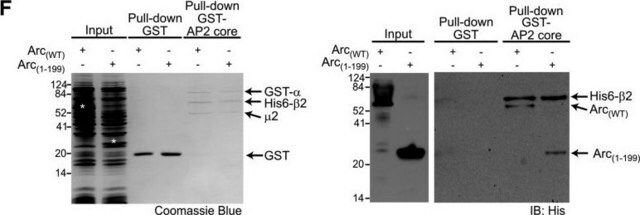Kluczowe dokumenty
A2556
Monoclonal Anti-Rabbit IgG (γ-chain specific)−Alkaline Phosphatase antibody produced in mouse
clone RG-96, purified immunoglobulin, buffered aqueous glycerol solution
Synonim(y):
Monoclonal Anti-Rabbit IgG (γ-chain specific)
About This Item
Polecane produkty
pochodzenie biologiczne
mouse
Poziom jakości
białko sprzężone
alkaline phosphatase conjugate
forma przeciwciała
purified immunoglobulin
rodzaj przeciwciała
secondary antibodies
klon
RG-96, monoclonal
Formularz
buffered aqueous glycerol solution
reaktywność gatunkowa
rabbit
spodziewany brak reakcji z
goat, feline, pig, guinea pig, rat, bovine, canine, human, horse, sheep, chicken
metody
direct ELISA: 1:50,000
immunohistochemistry (formalin-fixed, paraffin-embedded sections): 1:100
western blot: 1:200,000-1:400,000 using total cell extract of HeLa cells
izotyp
IgG1
Warunki transportu
wet ice
temp. przechowywania
2-8°C
docelowa modyfikacja potranslacyjna
unmodified
Powiązane kategorie
Opis ogólny
Zastosowanie
Działania biochem./fizjol.
Postać fizyczna
Oświadczenie o zrzeczeniu się odpowiedzialności
Nie możesz znaleźć właściwego produktu?
Wypróbuj nasz Narzędzie selektora produktów.
Kod klasy składowania
10 - Combustible liquids
Klasa zagrożenia wodnego (WGK)
WGK 2
Środki ochrony indywidualnej
Eyeshields, Gloves, multi-purpose combination respirator cartridge (US)
Wybierz jedną z najnowszych wersji:
Masz już ten produkt?
Dokumenty związane z niedawno zakupionymi produktami zostały zamieszczone w Bibliotece dokumentów.
Klienci oglądali również te produkty
Nasz zespół naukowców ma doświadczenie we wszystkich obszarach badań, w tym w naukach przyrodniczych, materiałoznawstwie, syntezie chemicznej, chromatografii, analityce i wielu innych dziedzinach.
Skontaktuj się z zespołem ds. pomocy technicznej




